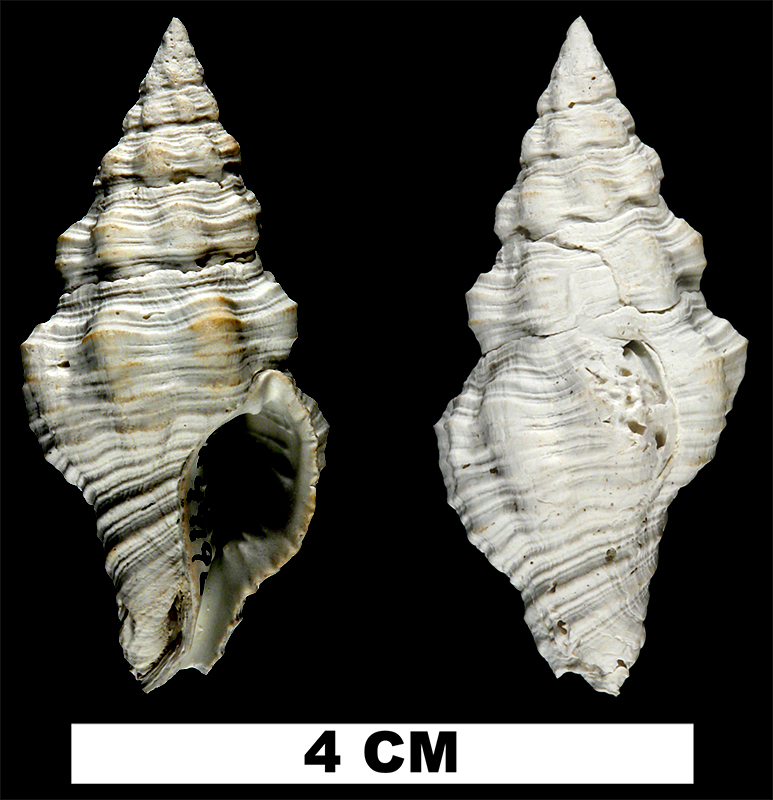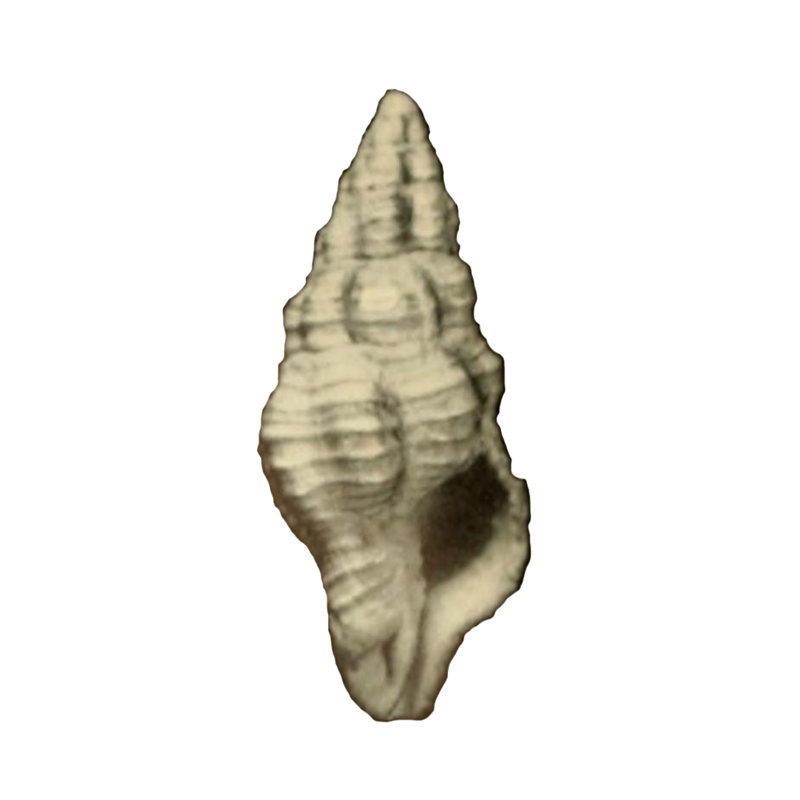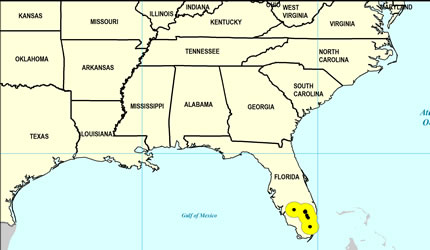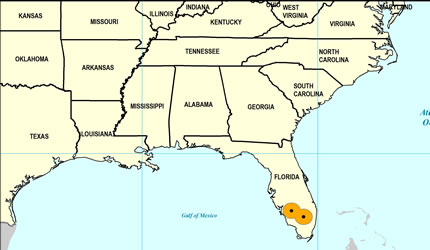
Polygona jucunda
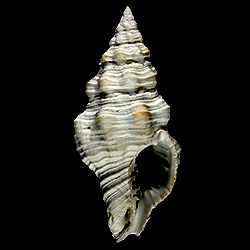
- Phylum: Mollusca
- Class: Gastropoda
- Order: Neogastropoda
- Family: Fasciolariidae
- Genus: Polygona
- Species: Polygona jucunda (McGinty, 1940)
Geological Range
Early Pleistocene to Middle Pleistocene; Recent.
Paleogeographic Distribution
Southern Florida.
Remarks
For information on the modern distribution of this species, see Malacolog.
Original Description (from McGinty, 1940, p. 83):
"The delightful Latirus.
Shell fusiform, whorls 7 (apex lost), solid, with spire longer than the aperture, umbilicus slightly open; sculpture of rounded axial folds, about 7 in number on the last whorl, weak at suture and on the base; spiral threads on the shoulder and stronger cords below, the upper-most and those on the base alternating with smaller threads. Aperture elongate, lirae in the throat about 8. There are 4 columellar folds, about equal, and a strong ridge on the parietal wall near the posterior angle of the aperture. Height 43.8 mm., width 19 mm.
Locality: Belle Glade, Palm Beach County. Horizon: Pliocene (?) Holotype in McGinty collection.
L. jocundus can be most easily distinguished from L. maxwelli by the smaller size, the more slender shell, surface sculpture and the only slightly open umbilicus. The presence of two well developed cords on the earlier whorls suggests the recent L. mcgintyi."
To access this description in its original formatting through the Biodiversity Heritage Library, click here.
Stratigraphic Occurrences
- Middle Pleistocene
- Bermont Formation (S. FL)
- Early Pleistocene
- Caloosahatchee Formation (S. FL)
